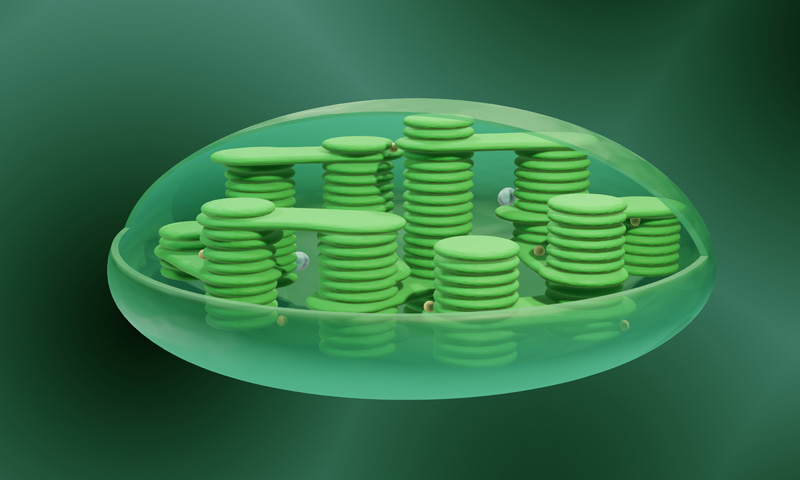Photosynthetic humans
Photosynthetic humans
Following many decades of research, a number of human-plant chimeras are moving from the laboratory into clinical and commercial use. Among the treatments now available is a method for combining the photosynthetic capabilities of chloroplasts with human skin. This enables a person to gain energy from being exposed to sunlight.
In 1990, scientists first coined the term "kleptoplasty" to describe a symbiotic phenomenon whereby plastids, notably chloroplasts from algae, are sequestered by host organisms. This had been observed in Elysia chlorotica, a species of green sea slug that absorbed chloroplasts from the algae it ate, making it effectively a solar-powered animal.
In the early decades of the 21st century, researchers engineered cells that combined both animal and human material, producing chimeras (named after the creature from Greek mythology that possessed the head of a lion, the body of a goat and the tail of a snake). One notable experiment, for example, succeeded in placing human stem cells into a pig embryo, albeit with very low efficiency. Another study a few years later placed human stem cells into monkey embryos, observed over a 20-day period.
These and other studies paved the way to growing animals with human organs – addressing the shortage in transplantable hearts, kidneys, livers, lungs and other body parts – while also helping researchers to understand more about early human development and disease progression.
Alongside these human-animal chimeras, progress occurred with engineering the first human-plant chimeras. Researchers had earlier demonstrated the synthesis of whole genomes from scratch, such as the recoding of 18,214 codons in E. coli to produce a new variant of the bacteria. This led to larger and more complex genomes being synthesised. Further developments lay ahead, as the full potential of this field started to become apparent. No longer limited to just genomes, researchers began to explore the creation of entire organelles – specialised subunits like "mini-organs" within a cell. The first synthetic chloroplasts emerged as lab teams aimed to improve upon the efficiency of natural ones, with a longer-term goal of replicating the process seen in the green sea slug Elysia chlorotica.

Following the creation of these synthetic organelles, work proceeded on merging them with human skin cells. Integrating this hybrid "second skin" into subcutaneous layers and the body's circulatory system became an even greater challenge, though the powerful AIs now emerging helped to accelerate the research process.
By the end of the 21st century and early 22nd,** the technique is becoming viable for clinical and commercial applications. Biotechnology upgrades in general are increasing in popularity during this period, as transhumanism continues its shift from a minority to the wider population. For those unable or unwilling to undergo the full procedure, less invasive options are available – such as photosynthetic hair, providing a small energy boost during the day. These hairs can be kept the same green as chlorophyll, or tweaked to a different colour.
For the more adventurous types, a whole-body infusion can provide an entire outer layer of photosynthetic skin. In other words, the equivalent of a solar panel with a surface area of nearly two square metres. To gain the full benefits, however, the second skin must be engineered to be at least 300 times more efficient than natural chloroplasts.* On an ideal day with plentiful sunshine, this can generate enough energy in one hour to meet their body's needs for up to 24 hours, depending on how fully clothed they are. Akin to a lasting caffeine rush,* the sensation of being charged with solar power is especially useful for those who may suffer with chronic fatigue or similar health issues.
As with hair, this second skin can be kept green, or modified to a more natural human colour. Most people keep their original skin tone, but green is a more popular choice with certain subcultures and eccentric personalities.
Comments
Post a Comment